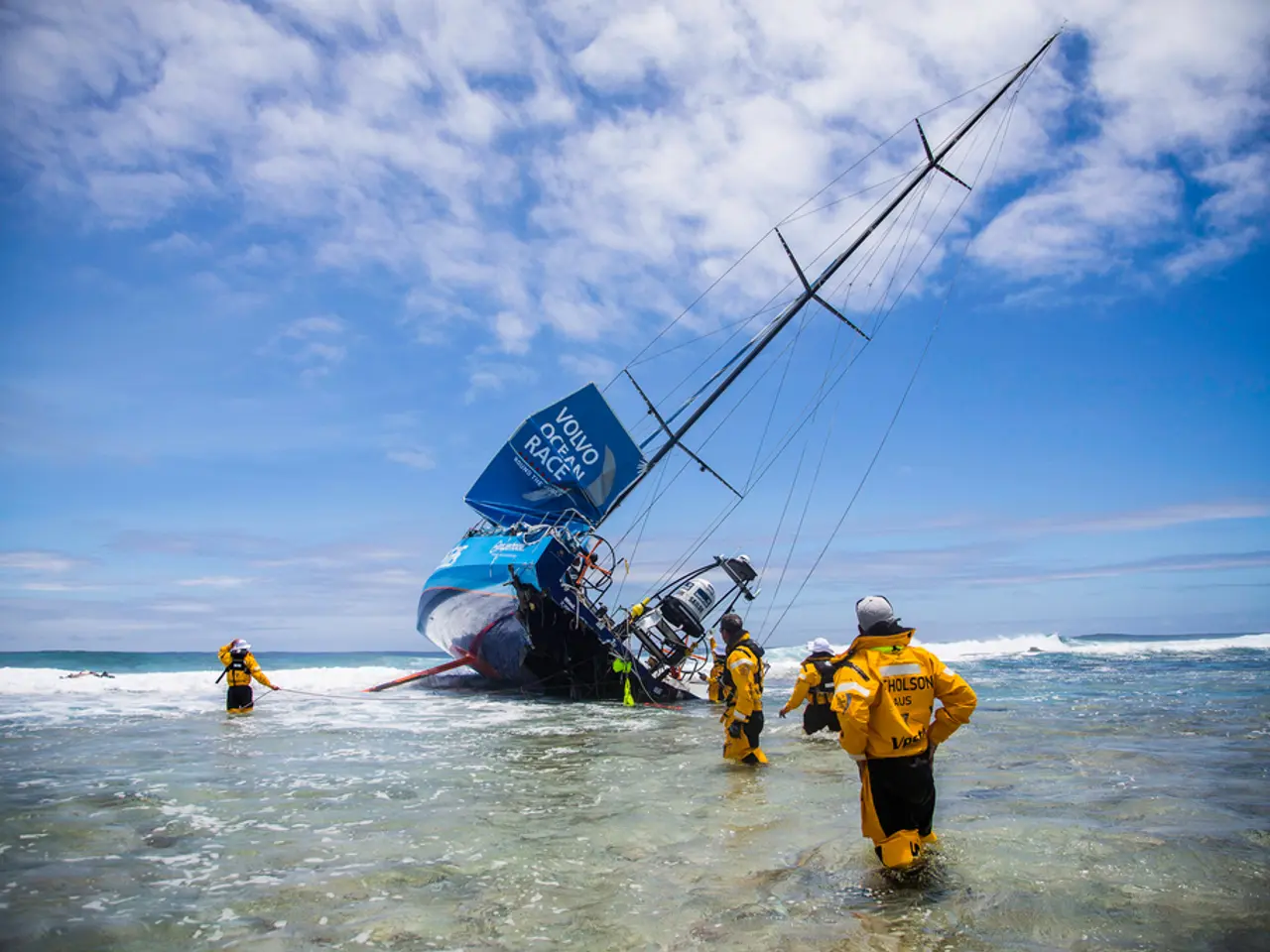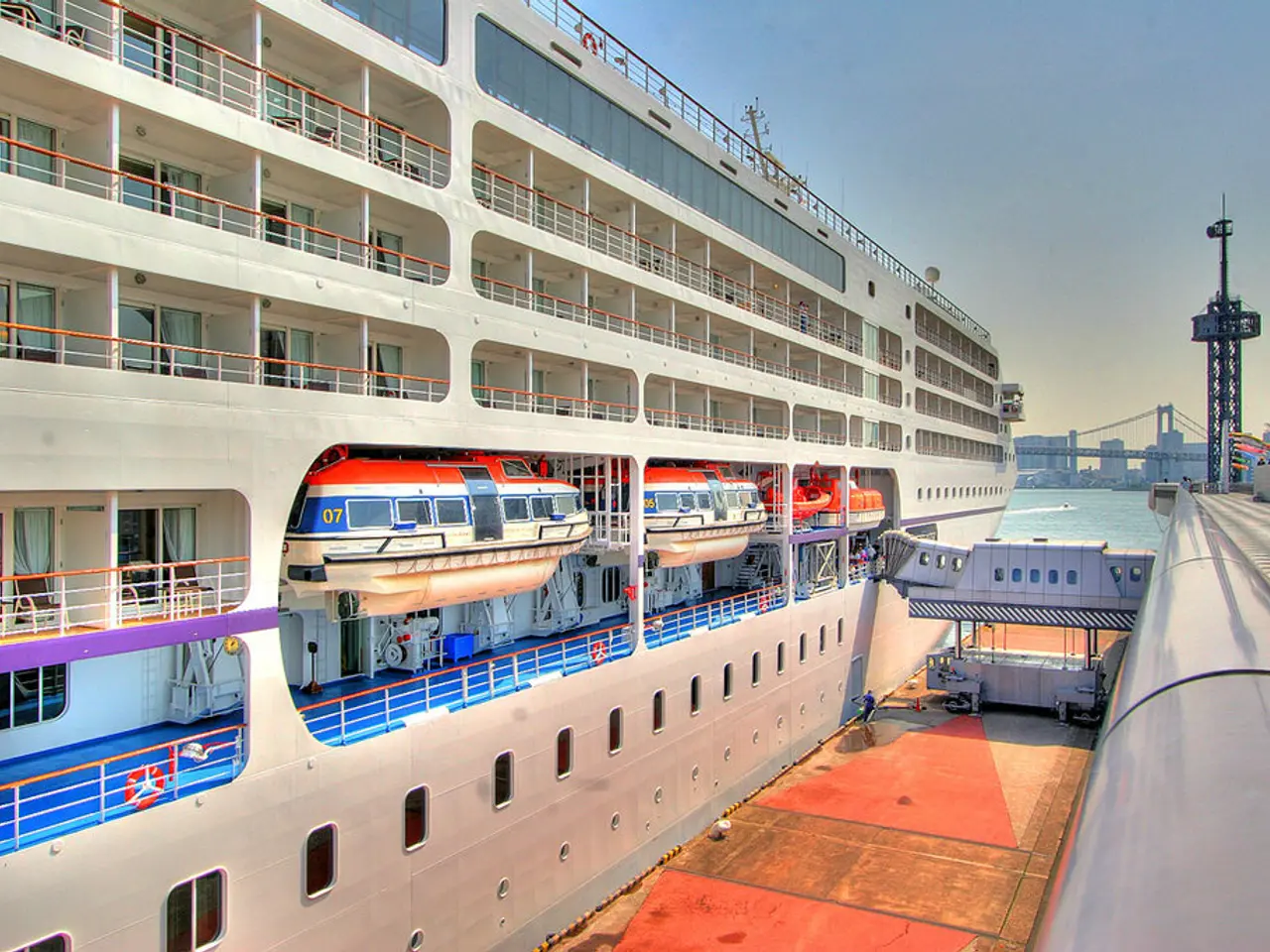Massive numbers of people head back to their residences as Pacific tsunami alerts are called off
In a dramatic turn of events, an 8.8 magnitude earthquake off Russia's Kamchatka peninsula on July 2025 shook the world, making it one of the strongest earthquakes ever recorded. This powerful temblor placed it approximately as the sixth strongest in modern history.
The earthquake generated tsunami waves that affected multiple countries bordering the Pacific Ocean. Russia, Japan, the United States (Alaska), and warnings reached as far as Hawaii and Latin America, as well as Pacific islands including New Zealand.
Countries directly affected by tsunami waves or warnings due to the 8.8 quake include Russia (Kamchatka peninsula, epicenter region), Japan (coastal areas with tsunami waves hitting shore), the United States (Alaska) (coastal regions affected by tsunamis from the quake), Hawaii (issued tsunami alerts and warnings), various Pacific islands (alerts issued south toward New Zealand), and Latin American countries on Pacific coast (received tsunami warnings).
The earthquake, ranked among the top ten strongest recorded globally, followed historic events such as the 9.5 magnitude 1960 Valdivia earthquake in Chile and the 9.2 magnitude 1964 Alaska earthquake. However, it caused significant tsunami alerts across a broad area of the Pacific Rim.
Russian state television footage showed buildings and debris swept into the sea in the affected town. Despite being the strongest since 2011, the initial earthquake caused limited damage and only light injuries. No catastrophe was realized, with country after country lifting or downgrading warnings and telling coastal residents they could return.
The Fukushima nuclear plant in northeast Japan was temporarily evacuated. In Chile, 1.4 million people were ordered to high ground, but no damage or victims were reported, and waves of just 60 centimeters (two feet) were registered. Peru closed 65 of its 121 Pacific ports and flights to and from Maui were canceled.
Storm surges of up to four meters (12 feet) were predicted for some parts of the Pacific. Tsunami warnings were lifted across the Pacific rim, allowing millions of temporary evacuees to return home. The US Geological Survey said the quake was one of the 10 strongest tremors recorded since 1900.
Wednesday's quake was the strongest in the Kamchatka region since 1952. In Japan, almost two million people were ordered to higher ground, but the warnings were later downgraded or rescinded. Red-hot lava was observed flowing down the western slope of the Klyuchevskoy volcano.
Russian scientists reported that the Klyuchevskoy volcano erupted shortly after the earthquake. There was a 59 percent chance of an aftershock of more than 7.0 magnitude in the next week, according to the USGS. The regional seismic monitoring service warned of aftershocks of up to 7.5 magnitude.
The only reported fatality was a woman killed while driving her car off a cliff in Japan. In the Galapagos Islands, a surge of just over a meter was reported, causing no damage, and locals reported the sea level falling and then rising suddenly. The surge of water reached the World War II monument, approximately 400 meters from the shoreline, according to Mayor Alexander Ovsyannikov.
There is a powerful glow above the volcano, and explosions are occurring, according to Russia's Geophysical Survey. The only reported fatality was a woman killed while driving her car off a cliff in Japan.
- The news of the 8.8 magnitude earthquake off Russia's Kamchatka peninsula on July 2025 has sent shockwaves around the world.
- Art records and depictions of this devastating event will undoubtedly capture the attention of future generations.
- The East has witnessed yet another catastrophe with war-and-conflicts taking a back seat for now.
- As the world recovers from the earthquake, car-accidents and crime-and-justice issues continue to dominate general-news headlines.
- The earthquake served as a grim reminder that accidents, such as fires, can strike without warning.
- In the midst of the crisis, sports provided a welcome distraction, with the WNBA and baseball seasons in full swing.
- The NBA, MLB, NHL, golf, and racing tournaments continued amid the global turmoil, offering solace to millions.
- Interest in sports-betting has surged, as fans seek to predict the outcomes of their favorite games.
- With the earthquake dominating the news, basketball and NCAA-basketball championships have gained renewed attention.
- Despite the earthquake, weather and tennis forecasts are still being announced, providing updates to members of the affected regions.
- Sports-analysis experts are debating the impact of the earthquake on athletes' performance, while weather-forecasting is essential for those rebuilding their coastal homes.
- Auto-racing and mixed-martial-arts events are still scheduled, though with additional safety precautions in place.
- The political landscape remains unchanged on the surface, but the earthquake's aftermath may spark new discussions around disaster preparedness and prevention.
- As the world watches the Klyuchevskoy volcano erupting, the 2025 Grand Prix, horse-racing, and other events remain up in the air.
- With time, the devastation left by the earthquake will slowly recede, but its impact on the global community will be felt for years to come.








